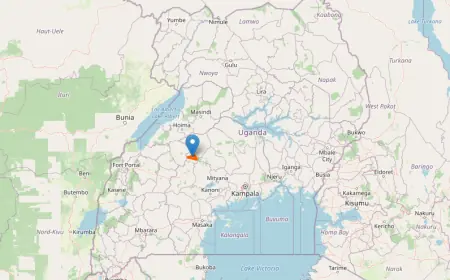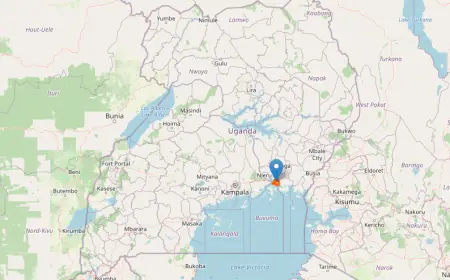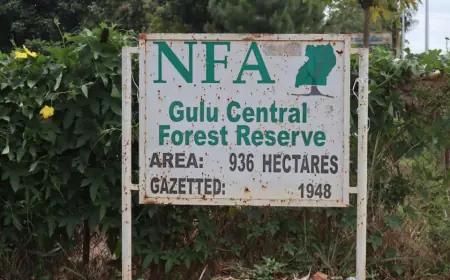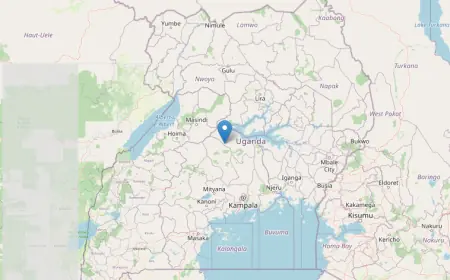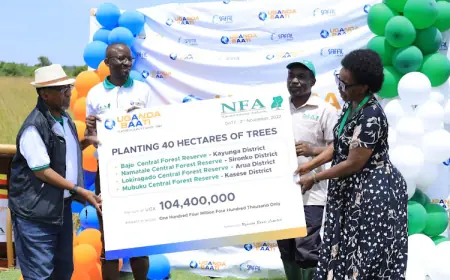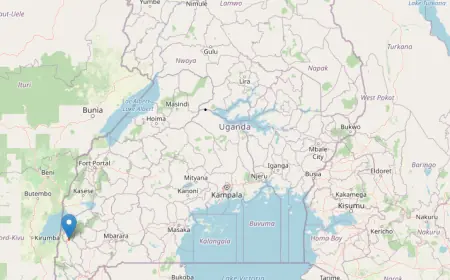Ibamba Central Forest Reserve
Despite its importance, the Ibamba Central Forest Reserve faces many threats and challenges that endanger its existence and sustainability.
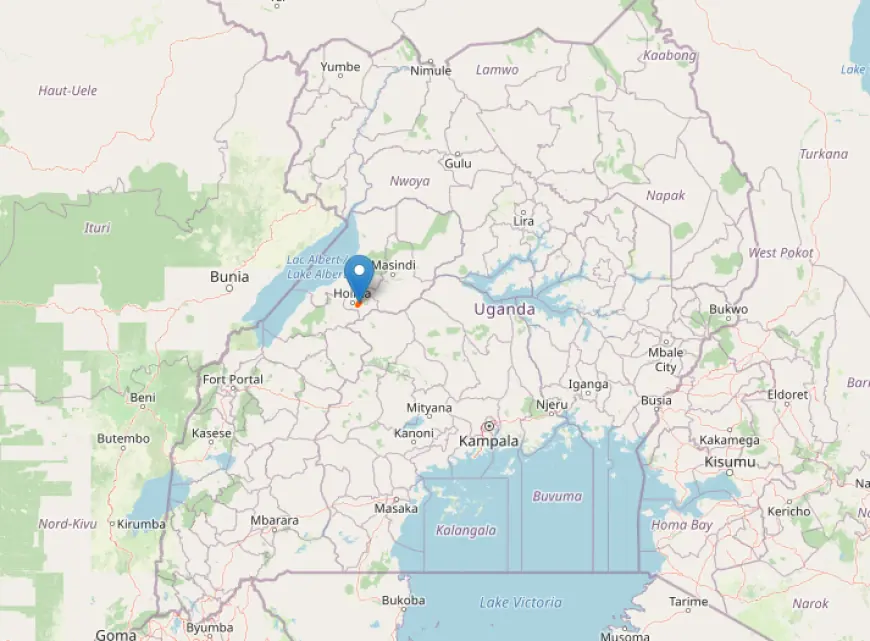
Imagine a place where you can breathe fresh air, listen to the sounds of nature, and enjoy the beauty of green forests. A place where you can escape the hustle and bustle of the city and reconnect with yourself and the environment. A place where you can learn about the history and culture of the people who live there and the challenges they face. Such a place exists in Uganda, and it is called Ibamba Central Forest Reserve.
What is the Ibamba Central Forest Reserve?
Ibamba Central Forest Reserve is a protected forest reserve under the mandate of the National Forestry Authority (NFA) and is located in Hoima District, western Uganda. The forest reserve is situated near the villages of Kihuule and Kicwamba.
Hoima is a city found in the western part of Uganda and is the main municipal, administrative, and commercial center for Hoima District, also known as the Oil City. Hoima is the hub of the Uganda Refinery Project, which aims to process crude oil from the Albertine Graben region and produce petroleum products for domestic and regional markets.
Ibamba Central Forest Reserve is found at latitude 1.42° or 1° 25’ 12" north and longitude 31.4051° or 31° 24’ 18" east. The forest reserve is in close proximity to the villages of Kiryabana and Buhanika.
The communities around Ibamba Central Forest Reserve largely speak the Nyoro language, also known as Runyoro. Runyoro is a Bantu language spoken by the Banyoro people, who are one of the four major ethnic groups in Uganda. The Banyoro have a rich and diverse culture, with traditions such as the Empaako, a naming system that expresses respect and affection.
Why is the Ibamba Central Forest Reserve important?
Ibamba Central Forest Reserve is one of the numerous central forest reserves in Uganda, which cover a total area of 12,657.47 km2, or 6.3% of the total land area of Uganda. These reserves are part of the protected areas of Uganda, which also include national parks, wildlife reserves, and community wildlife areas.
Protected areas are vital for the conservation of biodiversity, ecosystem services, and human well-being. They provide habitats for wildlife, regulate water and climate, prevent soil erosion and landslides, store carbon and reduce greenhouse gas emissions, and offer opportunities for recreation, education, and research.
The Ibamba Central Forest Reserve is a natural forest that supports a variety of flora and fauna. According to the NFA, the forest reserve has 14 tree species, 11 shrub species, 10 herb species, and 9 grass species. Some of the notable tree species include Albizia coriaria, Celtis africana, Ficus natalensis, and Markhamia lutea.
Ibamba Central Forest Reserve is not only important for nature but also for people. The forest reserve provides various benefits to the local communities, such as firewood, charcoal, timber, poles, medicinal plants, honey, and mushrooms. The forest reserve also serves as a source of income for some people who work as forest guides, beekeepers, or handicraft makers.
What are the challenges facing the Ibamba Central Forest Reserve?
Despite its importance, the Ibamba Central Forest Reserve faces many threats and challenges that endanger its existence and sustainability. Some of the major challenges include:
-
Encroachment: Encroachment is the illegal occupation or use of forest land for purposes such as agriculture, settlement, or grazing. Encroachment reduces the forest cover, degrades the soil quality, and increases the risk of fire and pests. According to the NFA, Ibamba Central Forest Reserve has lost about 40% of its original area due to encroachment.
-
Deforestation: Deforestation is the cutting down or clearing of trees for purposes such as timber, charcoal, or firewood. Deforestation reduces the biodiversity, ecosystem services, and carbon storage of the forest. According to the NFA, the Ibamba Central Forest Reserve has lost about 30% of its tree cover due to deforestation.
-
Land conflicts: Land conflicts are disputes or disagreements over the ownership, access, or use of forest land. Land conflicts can arise from unclear or overlapping boundaries, competing claims, or illegal transactions. Land conflicts can lead to violence, insecurity, and human rights violations. Ibamba Central Forest Reserve has been involved in several land conflicts, such as the case of Uganda Broadcasting Corporation (UBC), which was ordered by the High Court to pay NFA $104,808 (about Sh262 million) in uncleared license fees since the 1950s for illegally occupying Ibamba Central Forest Reserve land.
What can be done to protect and conserve the Ibamba Central Forest Reserve?
To protect and conserve the Ibamba Central Forest Reserve, there is a need for collective action and collaboration among various stakeholders, such as the government, the NFA, the local communities, civil society, and the private sector. Some of the possible actions include:
-
Strengthening the legal and institutional framework: There is a need to review and enforce the existing laws and policies that govern the management and use of forest resources, such as the National Forestry and Tree Planting Act 8/2003, the National Environment Act 5/2019, and the National Biodiversity Strategy and Action Plan 2015-2025. There is also a need to strengthen the capacity and accountability of the NFA and other relevant institutions to monitor and regulate forest activities and address land conflicts.
-
Promoting community participation and empowerment: There is a need to involve and empower the local communities in the planning and implementation of forest management and conservation activities, such as boundary demarcation, patrolling, restoration, and alternative livelihoods. There is also a need to raise awareness and educate the local communities about the importance and benefits of the forest reserve and the consequences of the threats and challenges.
-
Enhancing collaboration and partnership: There is a need to foster collaboration and partnership among the different stakeholders, such as the government, the NFA, the local communities, the civil society, and the private sector, to share information, resources, and best practices and to coordinate and harmonize the forest interventions and initiatives. There is also a need to engage and influence decision-makers and policymakers to support and prioritize the forest agenda and allocate adequate funds and incentives.
Conclusion
Ibamba Central Forest Reserve is a hidden gem in Uganda’s Oil City, offering a unique and valuable experience for nature lovers, culture enthusiasts, and history buffs. The forest reserve is important for the conservation of biodiversity, ecosystem services, and human well-being, but it also faces many threats and challenges that require urgent and collective action. By strengthening the legal and institutional framework, promoting community participation and empowerment, and enhancing collaboration and partnership, we can protect and conserve the Ibamba Central Forest Reserve for the present and future generations.
What's Your Reaction?
 Like
0
Like
0
 Dislike
0
Dislike
0
 Love
0
Love
0
 Funny
0
Funny
0
 Angry
0
Angry
0
 Sad
0
Sad
0
 Wow
0
Wow
0





























































